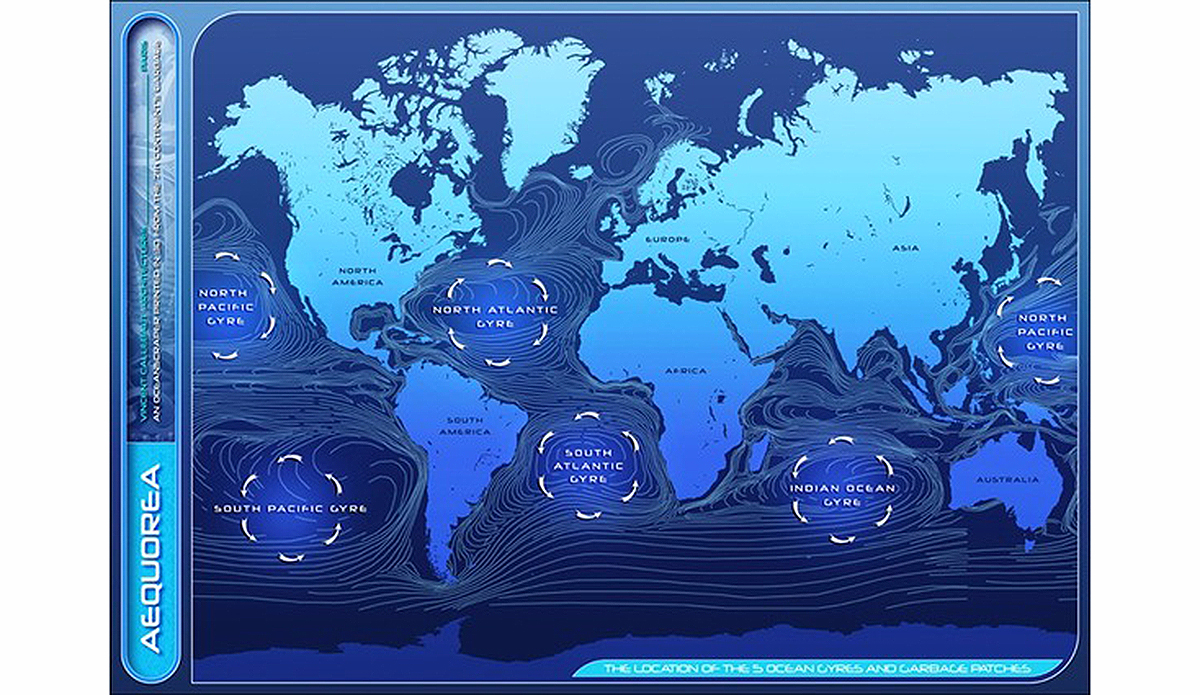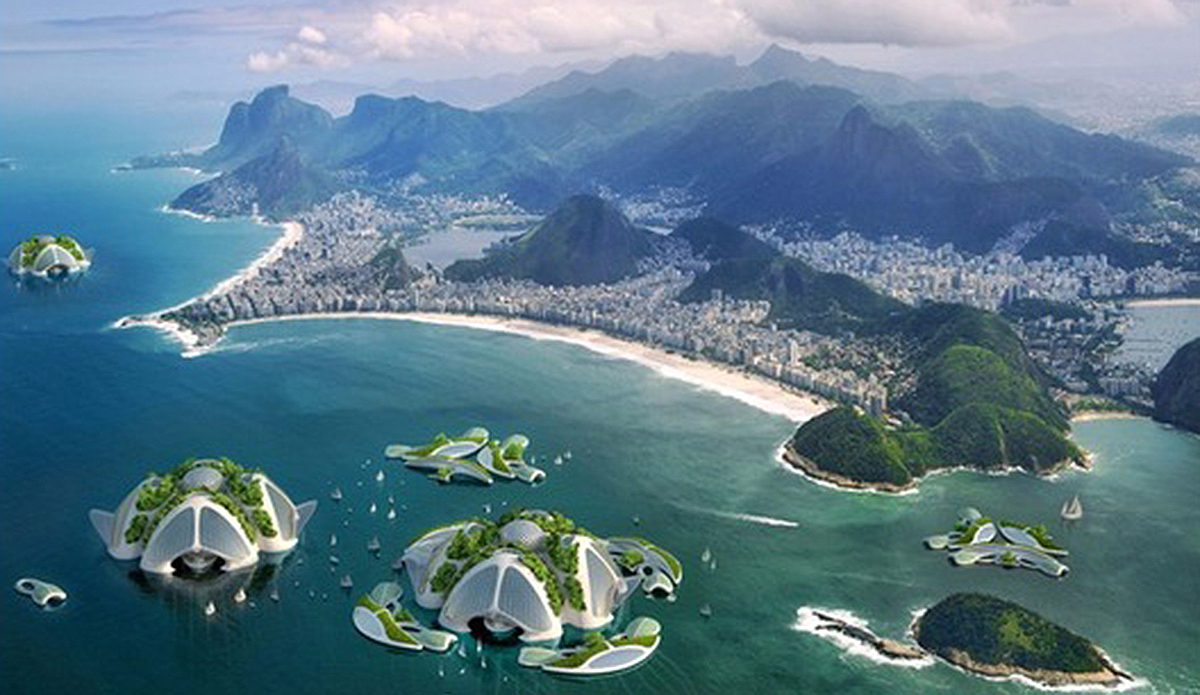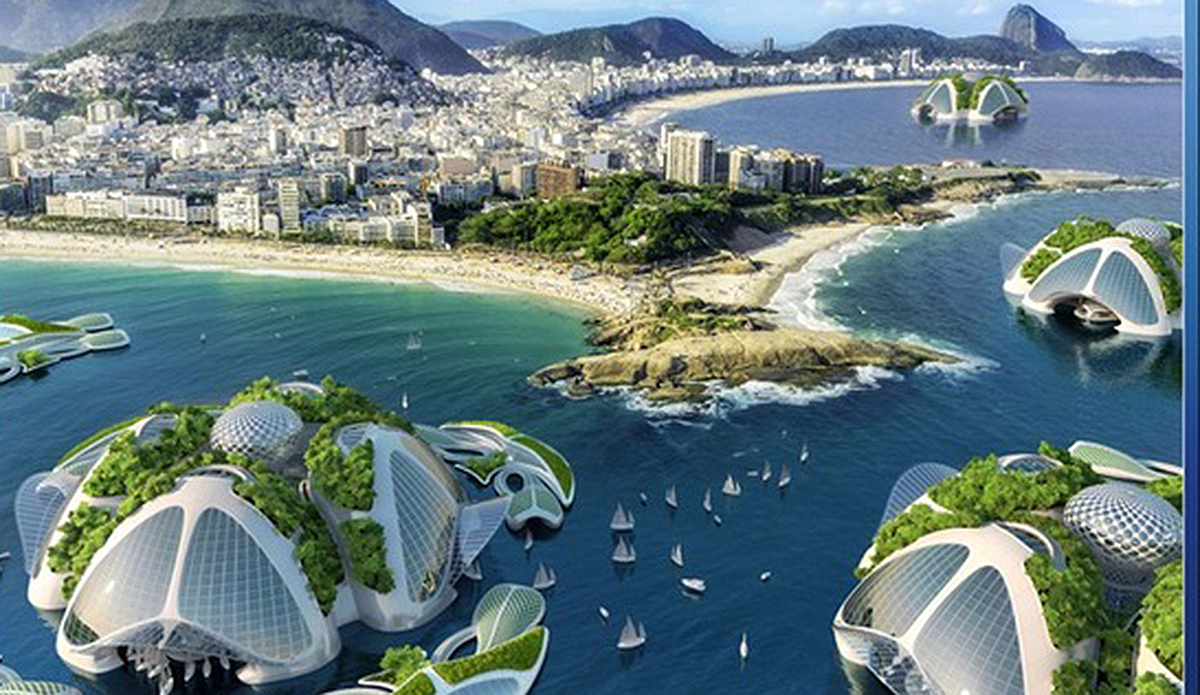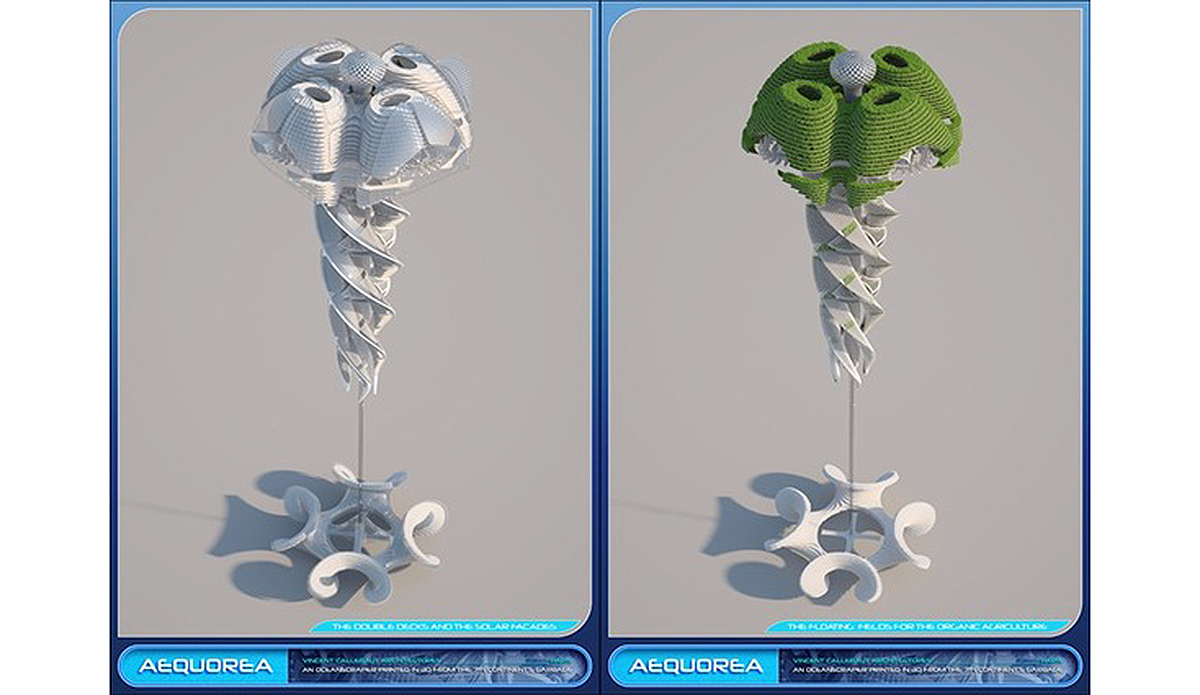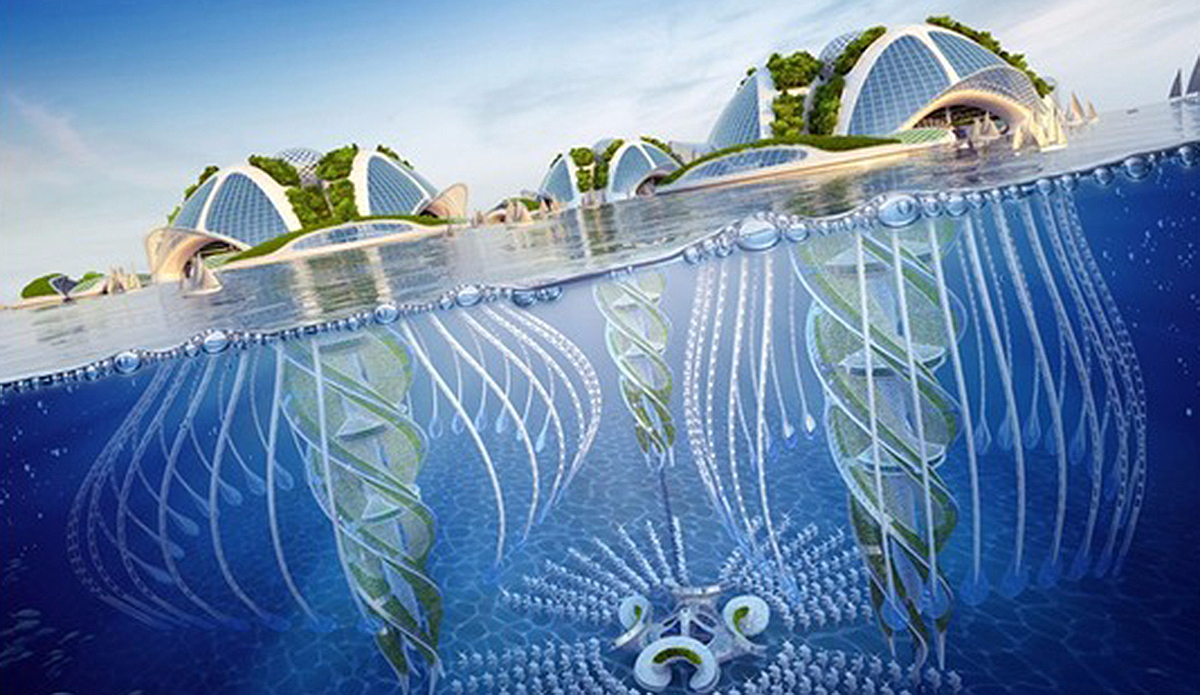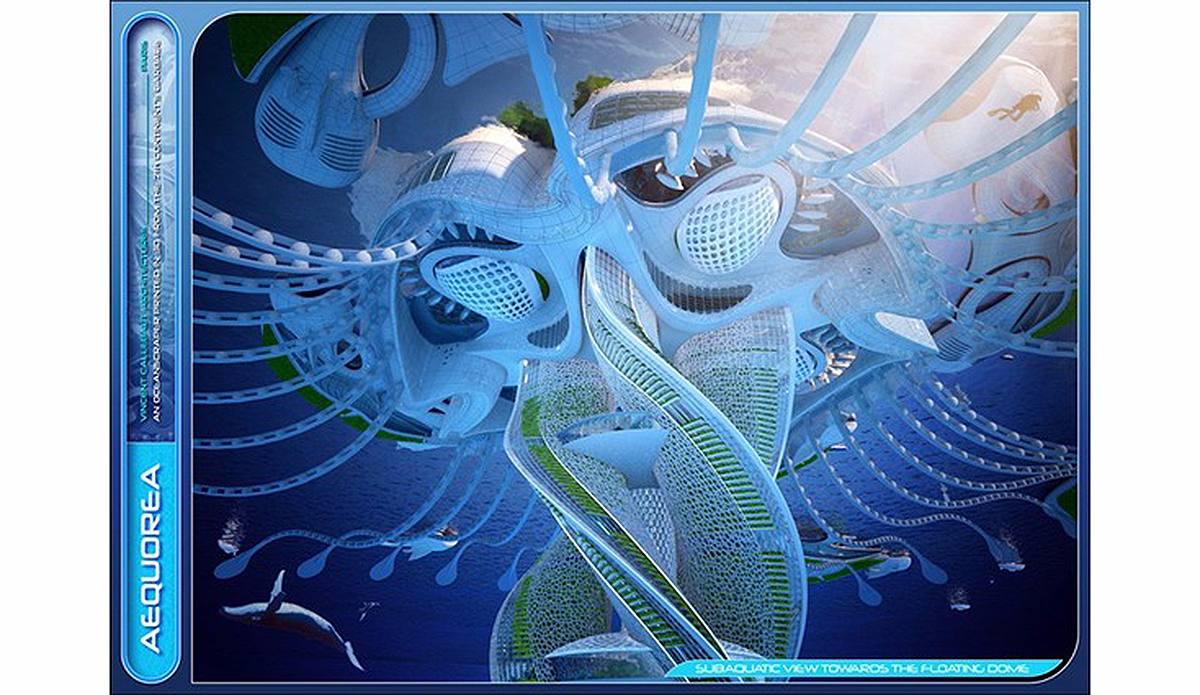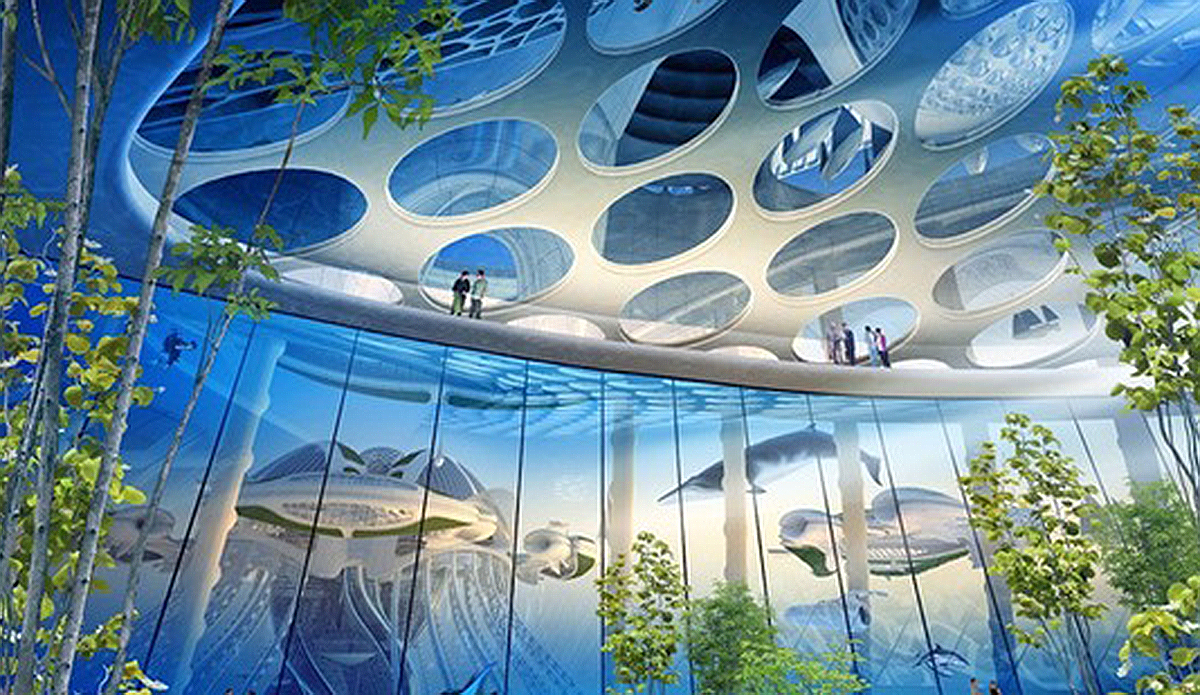Aequorea isn’t the first underwater city dreamed up by man. From fictional tales to real life doomsday preparation, finding a new environment for people to live in besides Earth’s surface is on the human race’s to-do list. One of the many unique twists in Aequora’s story is that it’s been born from both fiction and real life doomsday preparation.
In An Open Letter to the People of the Land, a 15-year old boy named Océane reaches out to the people still living above the surface of the sea. In 2065, Océane is living in an underwater village off the coast of Brazil where scientists have created a composite material that mixes algae with waste from the 7th continent. Yes, the 7th continent. Océane reflects on how our way of life in the 21st century leads to man’s need for a new home on Earth.
“Every human being was producing up to ten times their weight in garbage annually. Two hundred and sixty-nine million tons of plastic waste with a life expectancy of a thousand years were thus produced every single year, and more than 10% of it were ending up in the oceans.
My grandmother explained to me that, geopolitically, the 7th continent didn’t belong to any state. It was indeed located in international waters. Through negligence, no one wanted to commit to cleaning those 27 million tons of plastic waste trapped by the sea currents in the heart of their vortex. The oceans, which cover 71% of the surface of our blue planet, had become the dumping ground of humanity, she told me.”
Ok, so this is a completely fictional story (assuming the letter wasn’t magically sent back from the future), but it’s inspired a real architect’s real mission to build Aequorea. The underwater cities would reach a depth of up to 1,000 meters (3,280 feet). Seawater would be desalinated for drinking, microalgae would recycle organic waste, and light would be provided through bioluminescence. The ideas are as futuristic as the design, and while this isn’t something we should plan to see in the timeframe Océane lays out, it’s pretty darn to cool to scope out. Plus, if there’s one piece of the story we can easily believe, it would be the idea that the ocean’s collection of waste will get to a point that man has to do something wild to fix it all.

